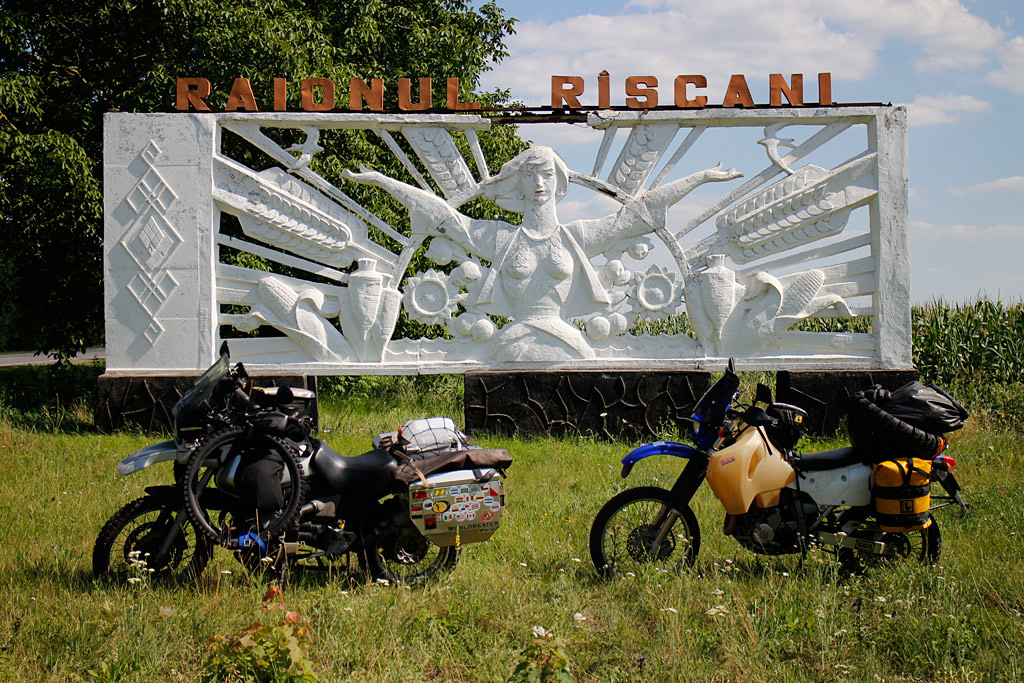
Moldova
A relatively large white “blob” remained on our World map after we returned from our awesome round-the-world ADVenture a few years ago, that we felt that we had to go to in order to find some peace of mind - we hadn’t had chance to get to know some major parts of our home continent, meaning most of Asia, actually. So finally, we got some unexpectedly long time off our jobs, packed our stuff, and zoomed off. This time, continuing on two bikes.
Firstly, as a starter and a warm-up, we headed South towards Latvia. Although the Latvian border lies merely an hour’s ride away from our home, we still hadn’t explored it too much. Well, at least we hadn’t ventured in too deep. So this time we decided to pay a visit to Daugavpils, a town that is located almost at the border with Belarus. Just like Narva in Estonia, Daugavpils is mostly a Russian-speaking town. This is probably due not only to the proximity with the Russian border, but also historic reasons. It hosts a large complex of Stalinist era buildings that not-so-recently served as the Soviet army’s base camp. Further back in history, there used to be a massive fort, remnants of which can still be seen today. Most of the buildings are closed off (and probably somewhat dangerous to enter), whereas the whole complex has been freshly paved. Looks like the local government is seeing its potential as a sight of Soviet-nostalgia tourism.
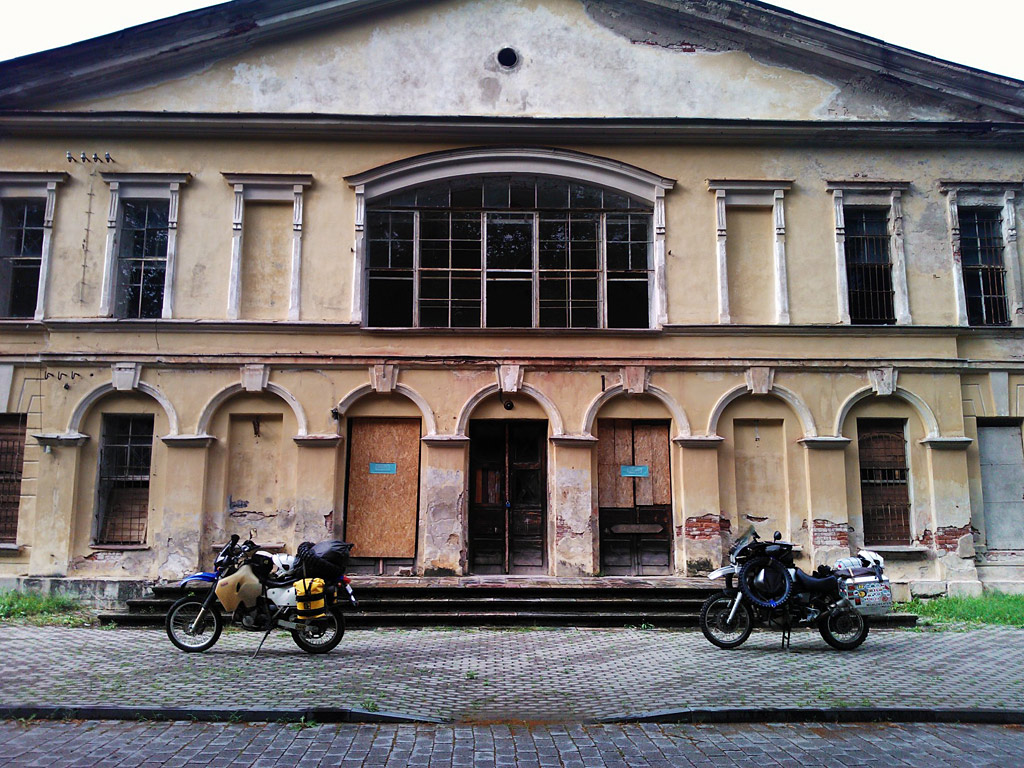
Daugavpils fortress
Having ridden around the complex a bit, we left Daugavpils and started looking around for a place to camp. Soon enough we found a decent spot on a meadow full of wild flowers, where we even spotted a gazelle. As some will notice from the picture, we’ve supplemented our gear with a Hilleberg’s tarp (which proved its usefulness already in the first days of our trip as it rained every night - and it always is nice to pack away a dry tent), and a pair of Helinox lightweight chairs (we’ve grown too old… or perhaps just too comfortable to do all cooking and eating while standing up). With two bikes, there’s more space to spare too.
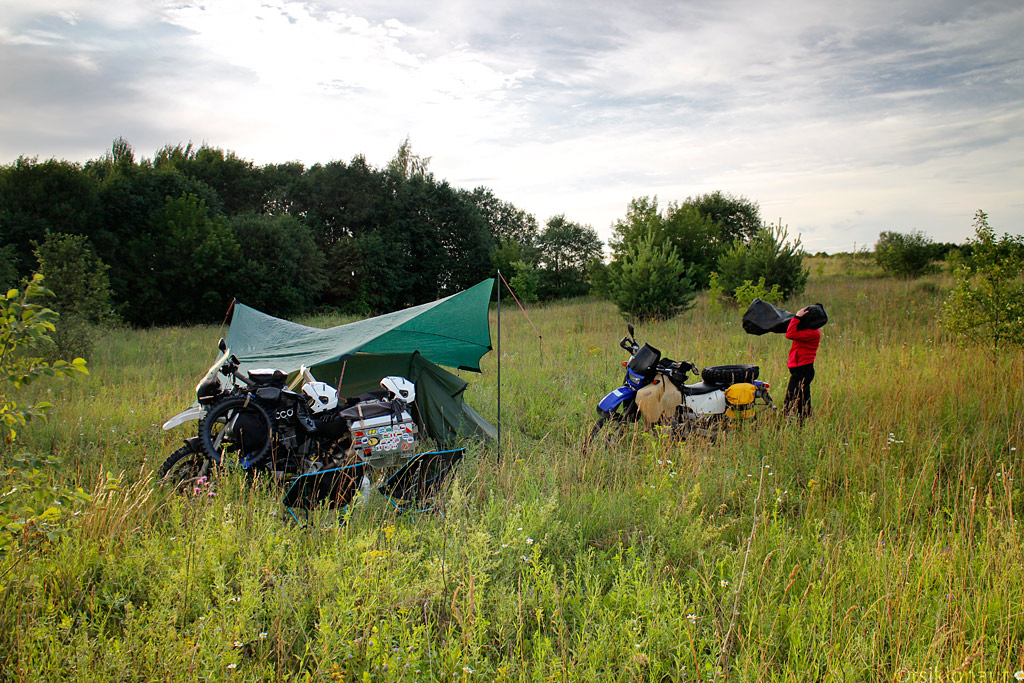
Camping in Eastern Latvia. Kariina has dug into our roll bag (the one that has travelled around the globe) to detect small holes - some water had seeped in, so we have to tape them up.
Next morning it was the first real border crossing (nobody checks documents at Estonian-Latvian border for years now). The Latvian customs officers had doubts if their counterparts on the Belarus side would allow us to bring in those spare tyres, but we had no problems. We had arranged our Belarus visas beforehand, so going through immigration was easy (only had to fill in immigration forms). Customs took more time, as first we had to fill in the customs declarations (two copies), and then the official had to type most of that information in their computer. Had to open our luggage for a brief inspection, but this was rather a formality mixed with curiosity. All in all, everybody was friendly and welcoming. If you don’t understand Russian, filling in the declaration might be a headache though, because it is all in Russian…
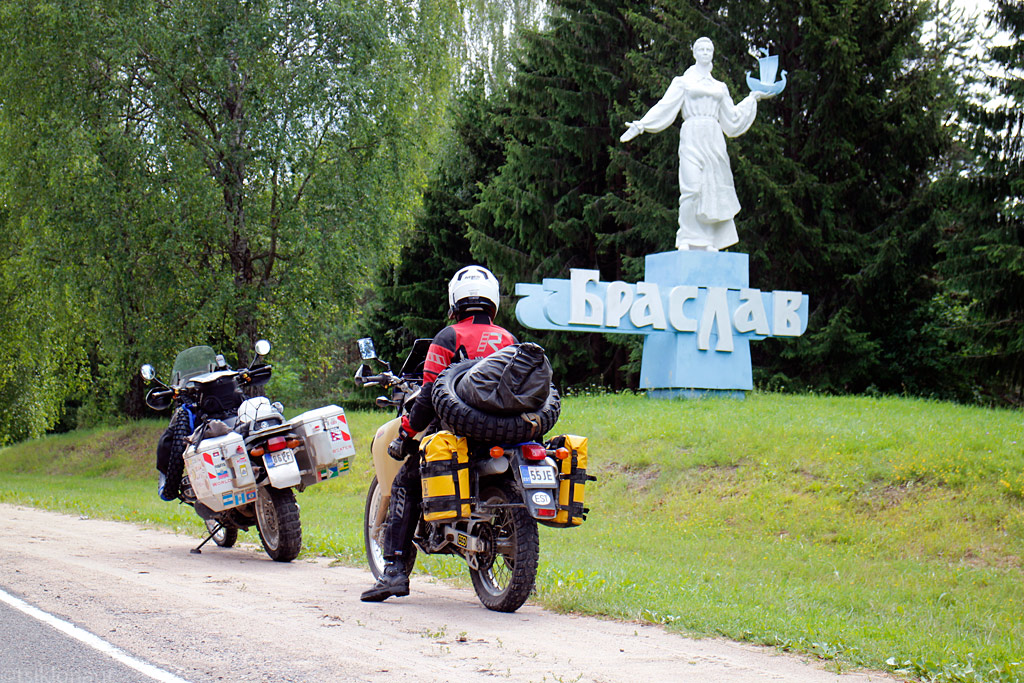
Braslav, Belarus
In late afternoon, we entered Minsk. The city is quite big and the traffic is pretty aggressive, but eventually we managed to find a hotel that Kariina had looked up as suitable (safe parking and bearable price - if someone is interested, look up Hotel U Fontana, they have a private parking lot in front, off the street). Went for a walk to see if there really was “nothing to see”, as many people say. It is true that there are’t many exciting sights, but we believe it is absolutely enlightening to simply observe the cityscape and the living environment as such, which most often says more about a country, its past and present than any monument of cathedral. In fact, there are some quite interesting examples of art and architectures to see…
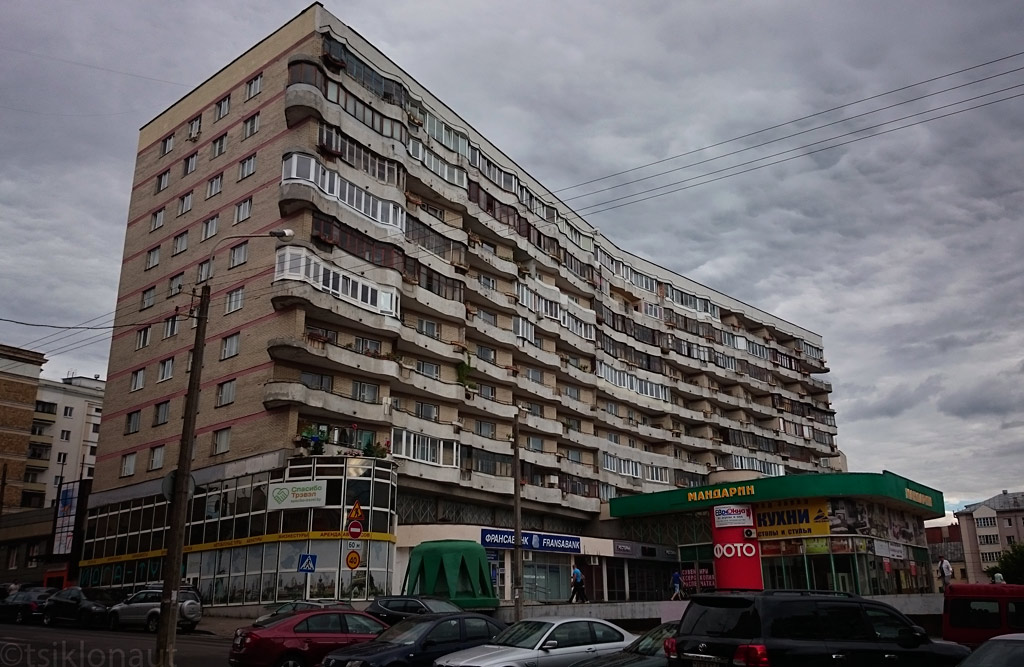
The architecture of Minsk is full of nostalgia for us, ex-USSR people
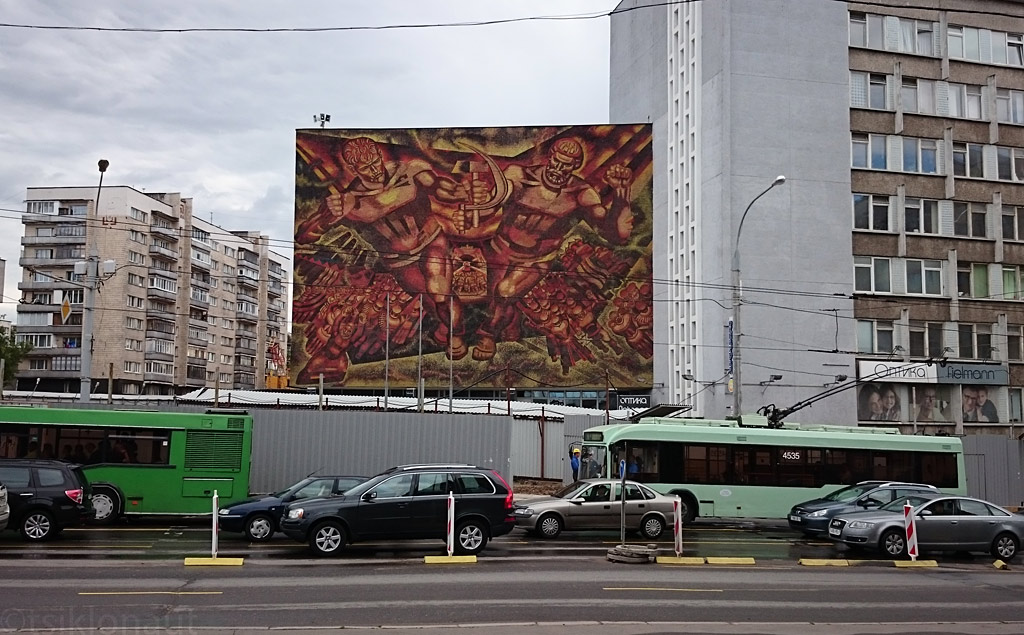
Communist mural
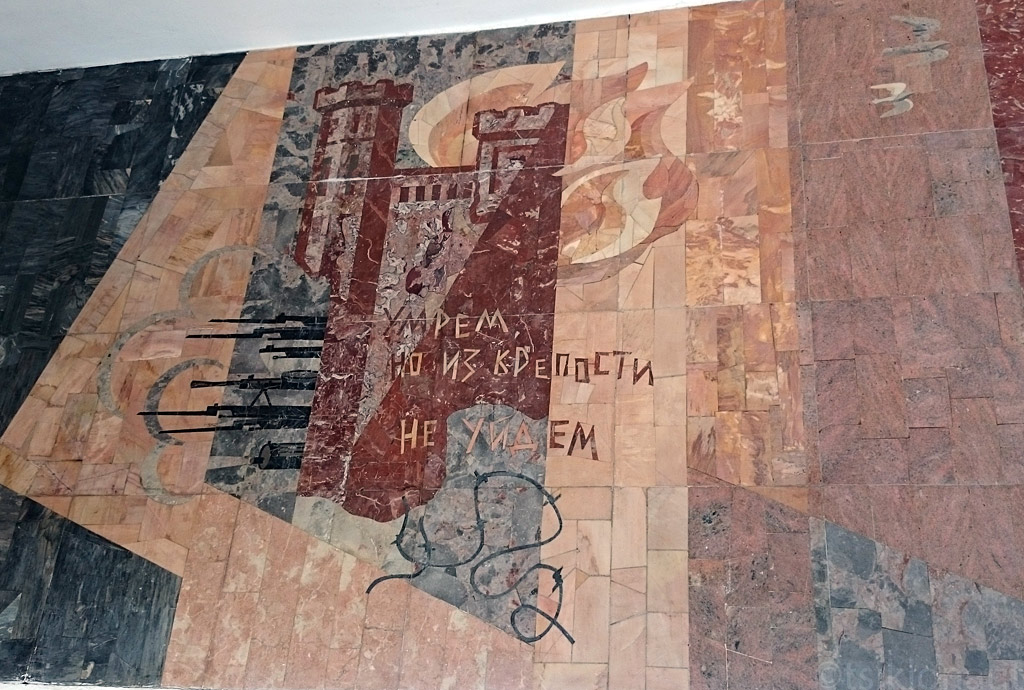
Murals in a metro station are World War nostalgic - “We will rather die than leave the fort”
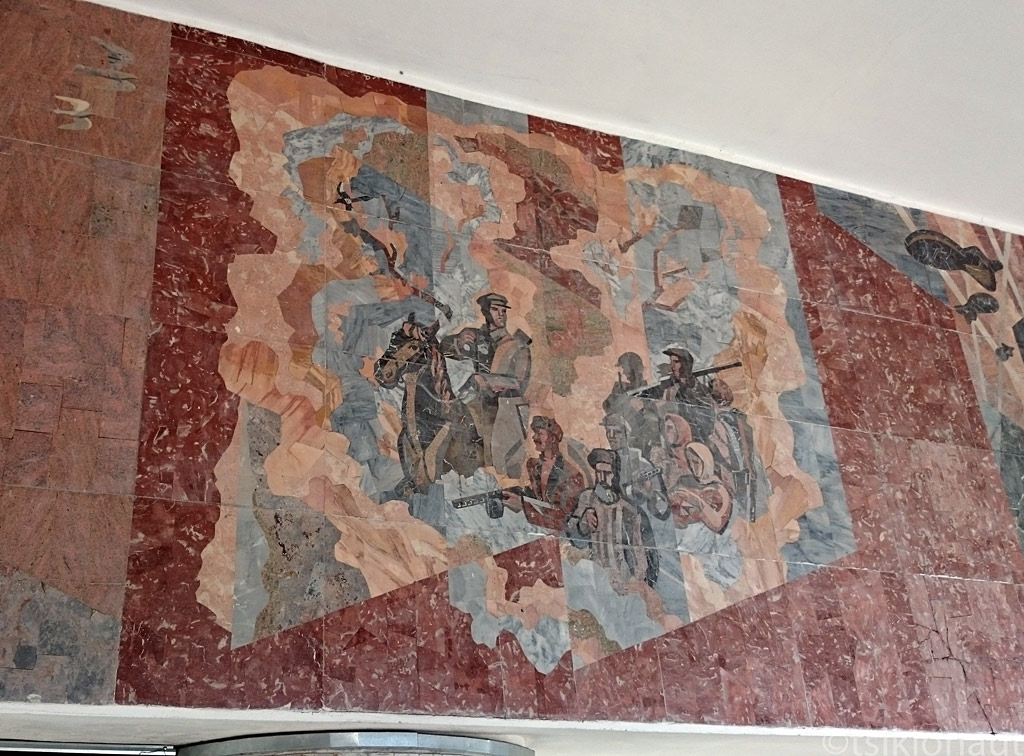
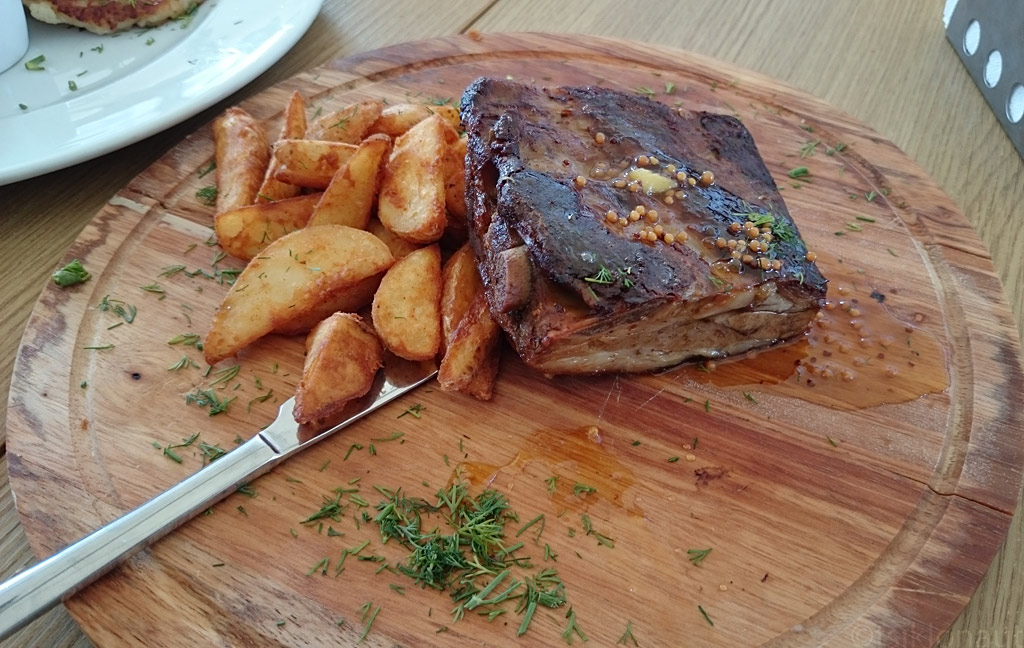
Went out to eat and try the local food - here are some ribs with potato, and hash browns (“draniki”) with sour cream.
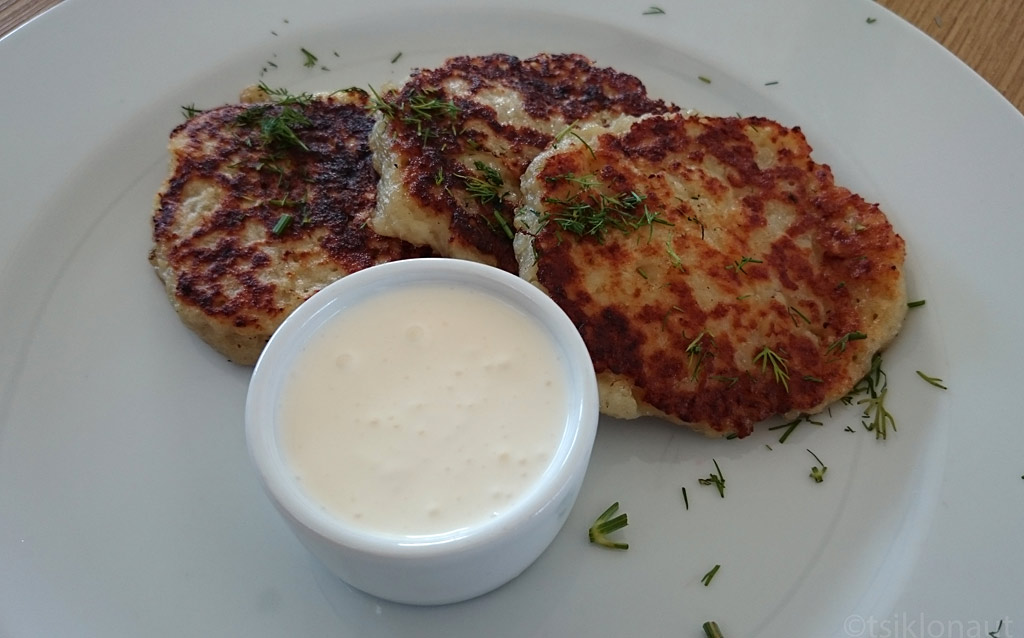
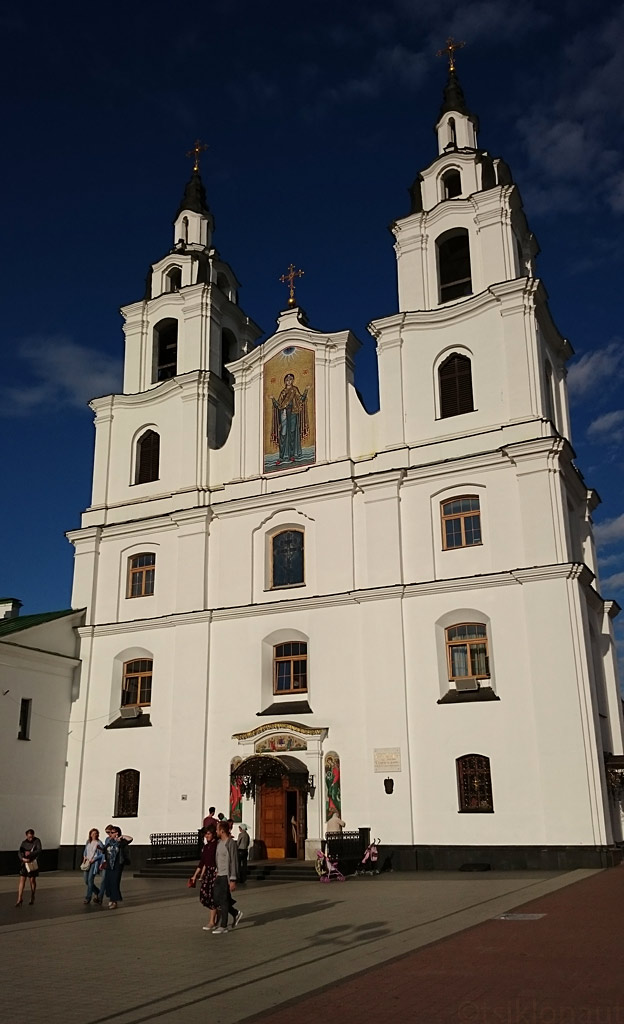
Minsk old town.
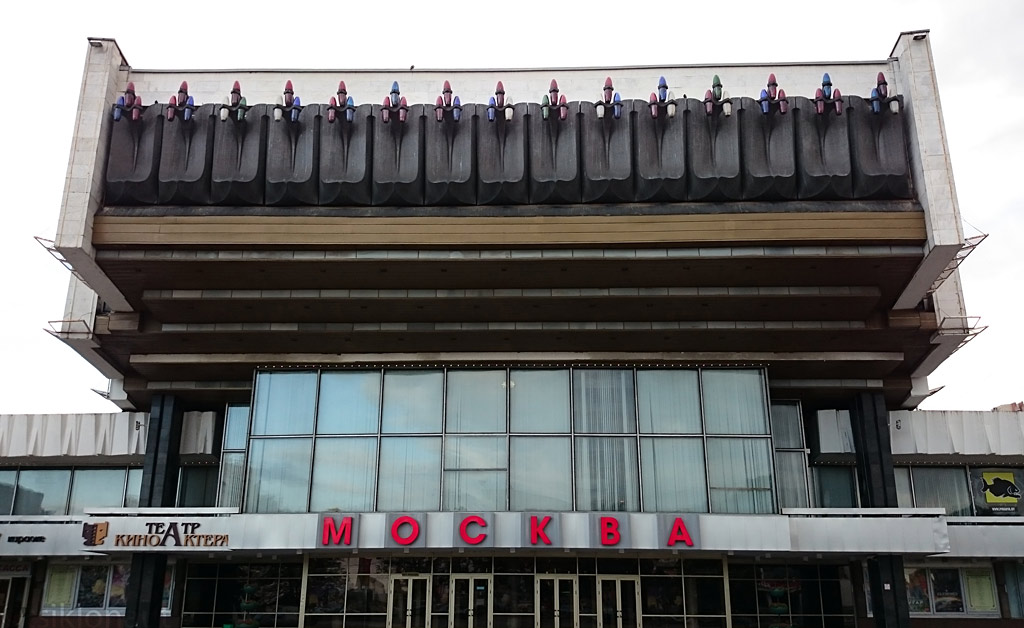
Soviet-era futurism - cinema "Moscow". Check out those funky mountings & lights on top!
From Belarus we moved on to Ukraine, where people were friendly but the roads were unexpectedly bumpy (not so many potholes though). If the northern part of the country was quite bland, the South-West was somewhat more interesting with the Karpathian mountains kicking in.
Then came Moldova… a country that one doesn’t hear much about. Suddenly, there was quite a stark change in the landscape, with loads and loads of orchards lining the road (in Ukraine, we mostly saw fields). The road was somewhat better too than in Ukraine. Our attention was caught by interesting artistic signs at the entrances to towns and major villages.
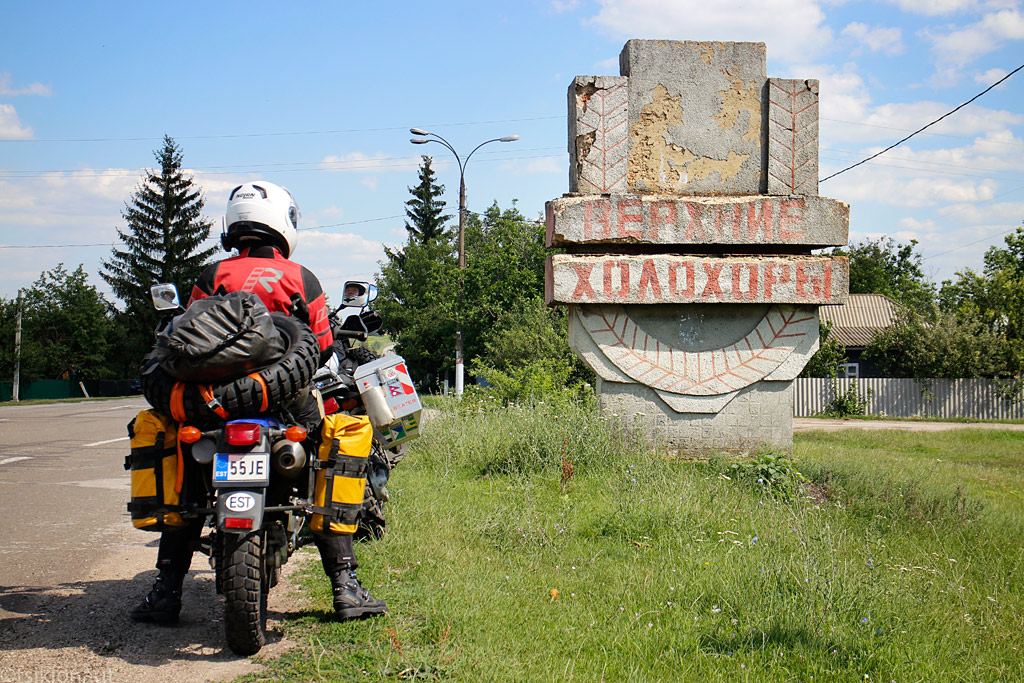
Signs in Moldova or very nicely done.
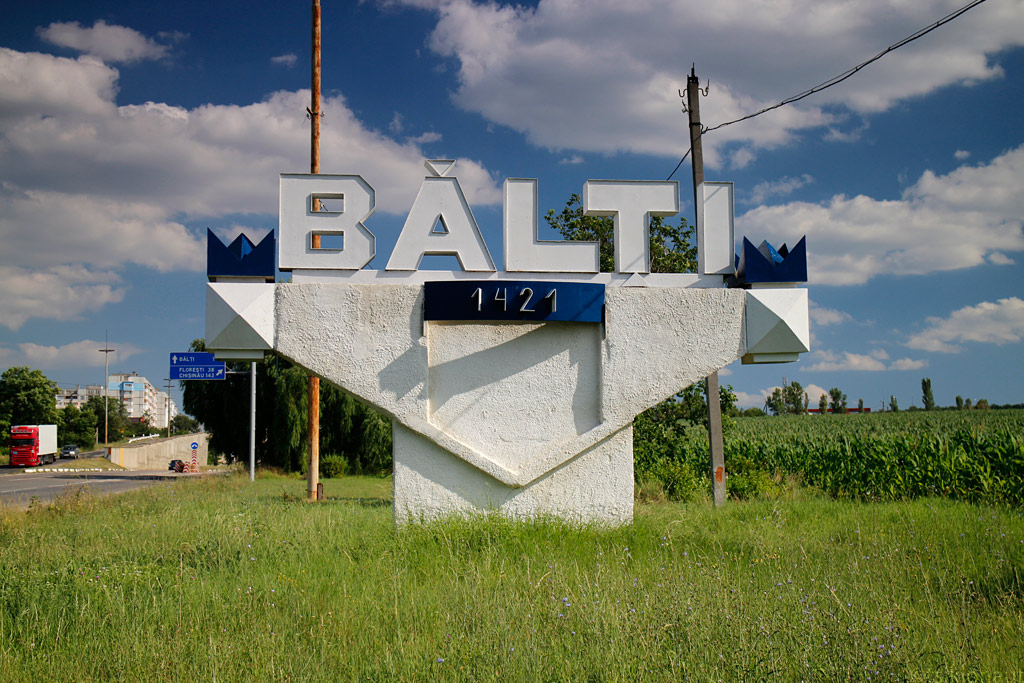
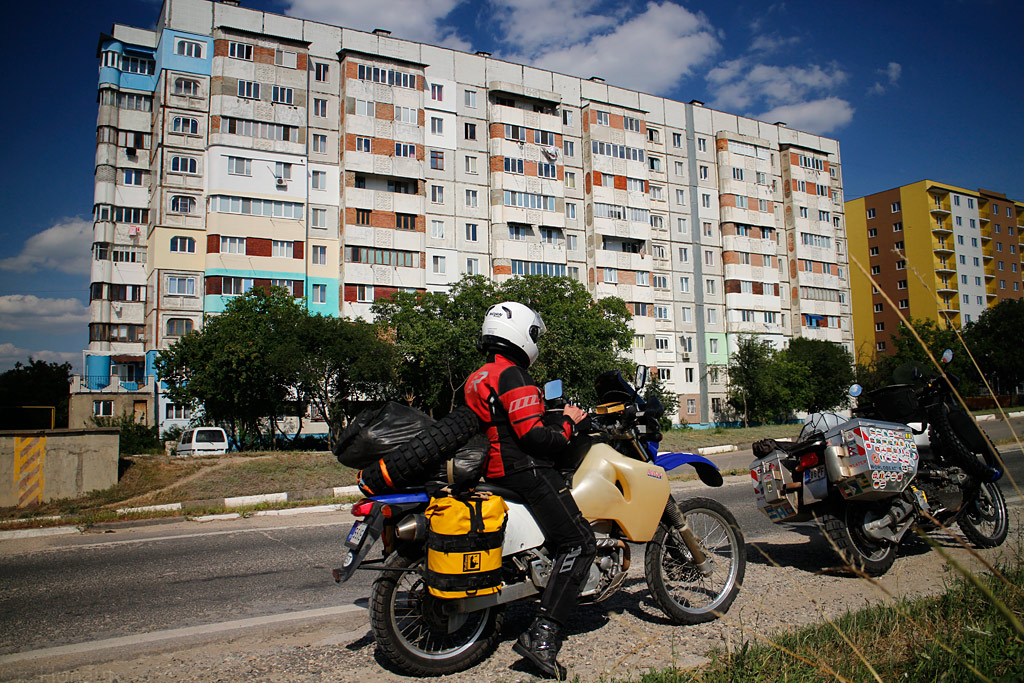
City of Balti in Moldova

Fields in Moldova
While in Chisinau, the capital of Moldova, there was no way we could not have visited a few of the numerous wine cellars located in close proximity to the city, as wine making is said to be declared part of national heritage by the Moldovan government. The wine cellars in Milesti Micii, located some 60 meters below ground, belong to the Guinness book of records with the limestone caves in which the wine is being stored measuring some 200 kilometres in length. We took a tour in the caves (one definitely cannot go inside without a guide as those caves form quite a maze, and we were told that it is not possible with a motorbike, so we had to hire a taxi from the city, but there was a couple on a bike from Ukraine there, and they were allowed in, so go figure…), and it was an amazing experience, passing by hundreds of barrels of wine.There are actually millions of liters of wine stored there - not only produced by Milesti Micii, but they also rent space to other producers and private persons who can rent a caza (basically a hole in the wall holding a couple hundred bottles) for around 150 euros a year to store their wine in perfect conditions. The temperature in the caves remains at +12…+14 degrees Celsius all year long, and the humidity is around 90%.
Sure enough, after the tours we grabbed a few bottles from their on-site shops for an “evaluation”, the ten-euro “collection wine” Negru de Milesti Micii (harvested in 1986 and bottled in 1997) being really, really delicious. Back at home the bottle would most probably cost at least double, if not triple the price, and we would never buy wine at that price, but here was a chance to try something special at a reasonable cost.
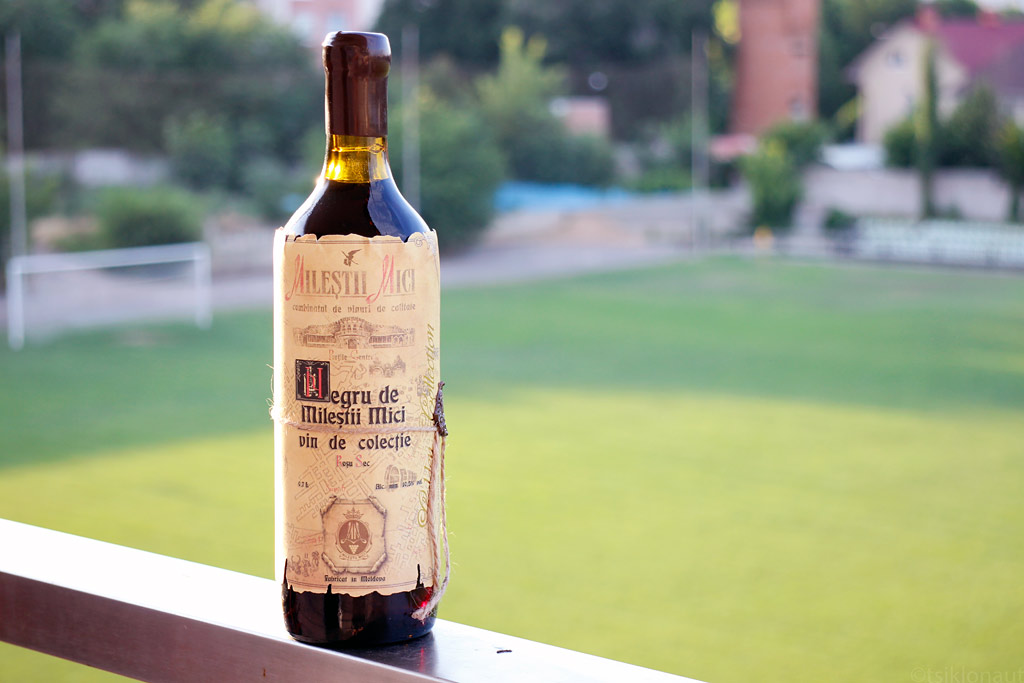
Bought a decent 30-year old wine from Soviet times, tasted real good.
We also paid a visit to the wine producer Cricova. They mostly seem to concentrate on sparkling wine. This being a private company (while Milesti Micii is state-owned), the premises are quite impressive and really done up, and the tour in their caves (also quite impressive 140 kilometres in total length) takes place in electric trains, so as not to produce any exhaust fumes nor loud noise - they say that wine likes silence…
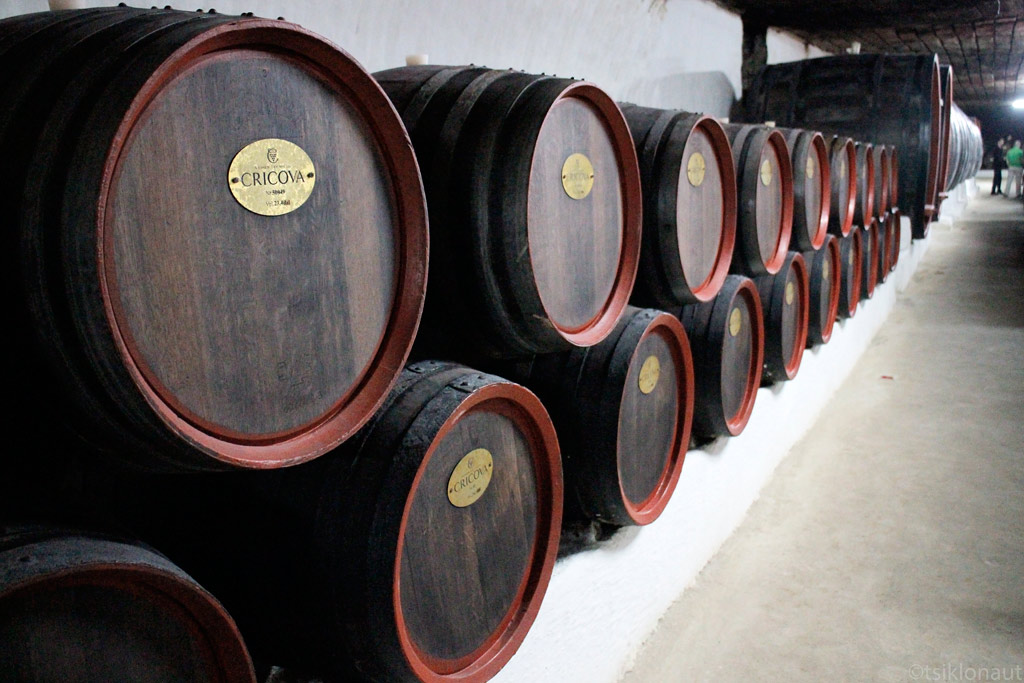
Cricova wine cellars - it's essentially an underground "city of wine".
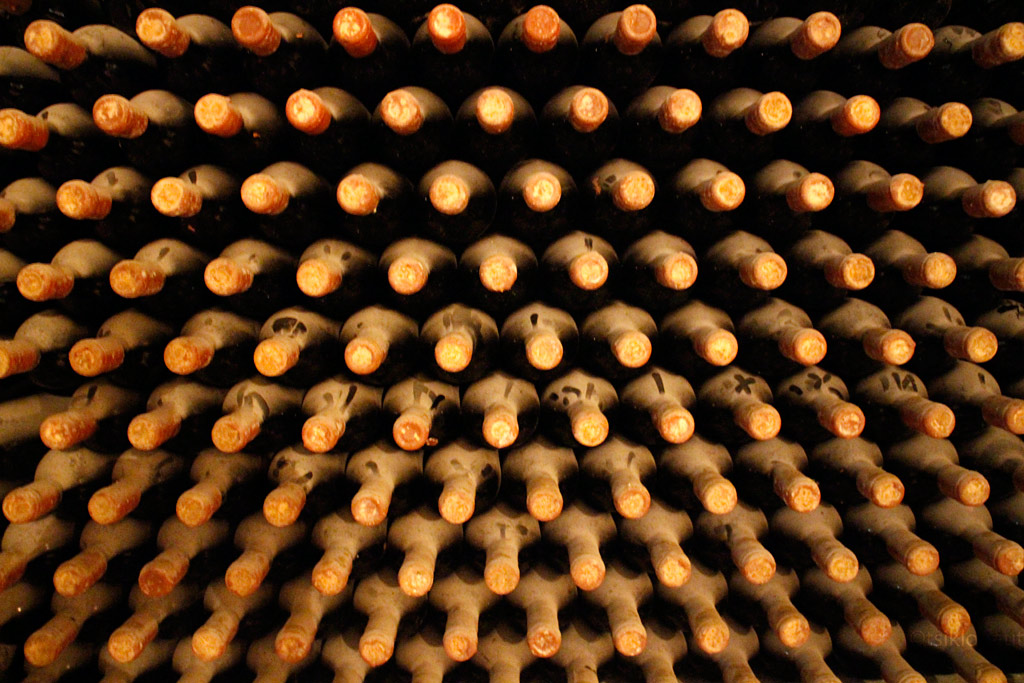
Old decent wines age more decent as times go on...
Staying in the capital for a few days we had a good chance to get a little acquainted with the local cuisine, which too was surprisingly delicious and varied.

Jam stuffed pancakes with sweet sauce.
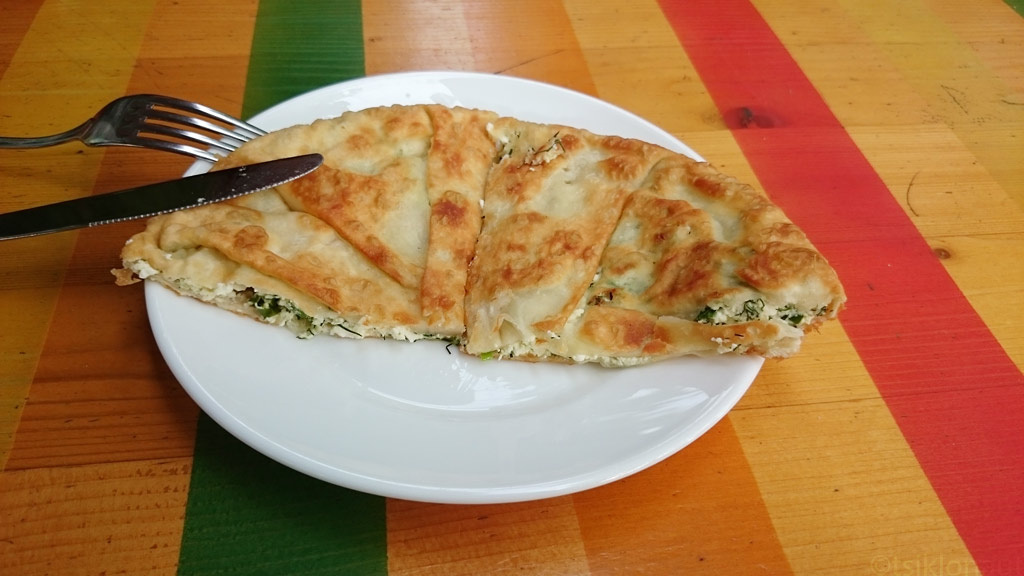
Pie with cottage cheese and herbs, Moldova style.
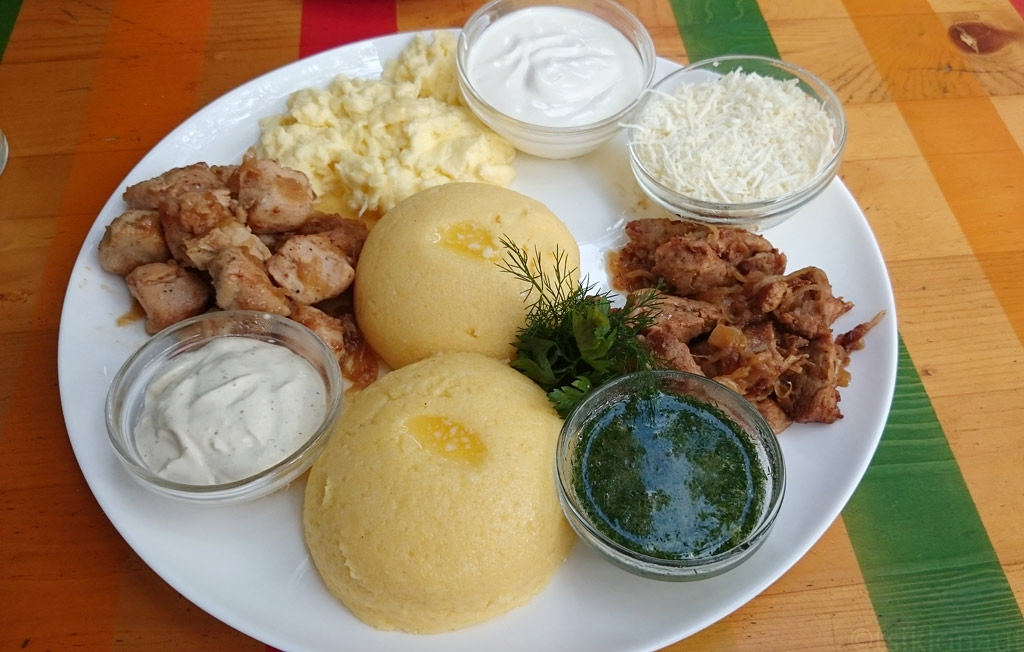
Moldovan national dish contains many elements, pork and chicken, mamalyga (porridge) with different sauces and cheese.
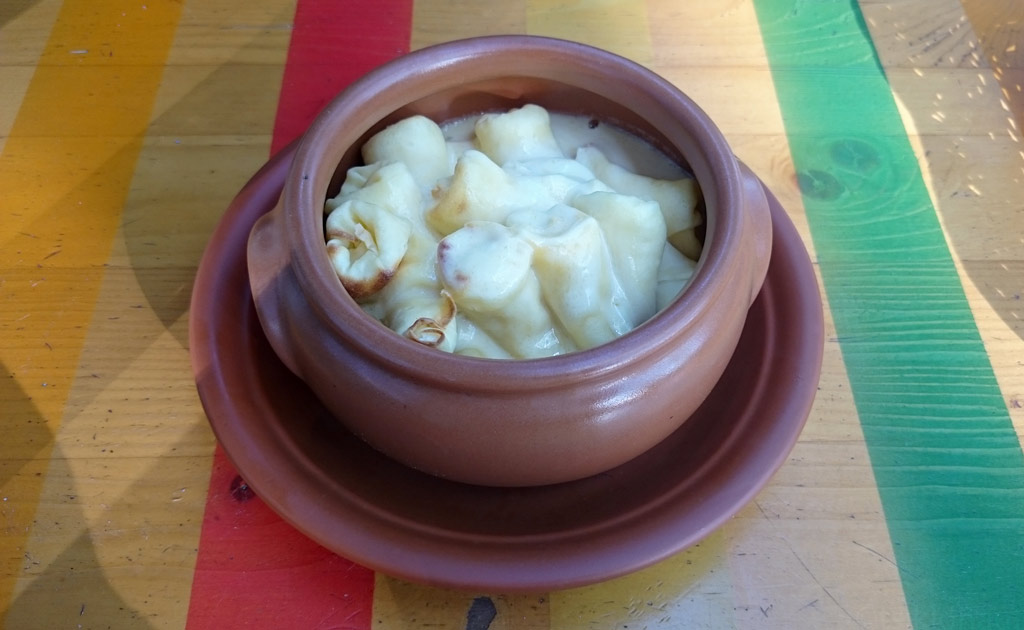
Pancake rolls in sourcream and honey sauce.
Moldovans do make very decent food!
As to Chisinau itself, the architecture is quite interesting, some buildings displaying elements reminiscent of the time of space race.
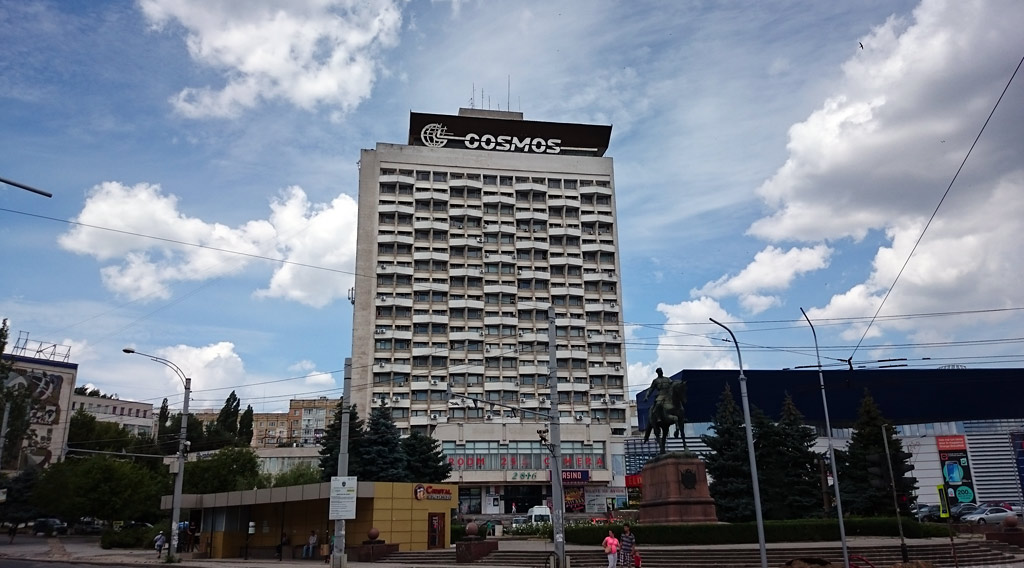
Hotel Cosmos.
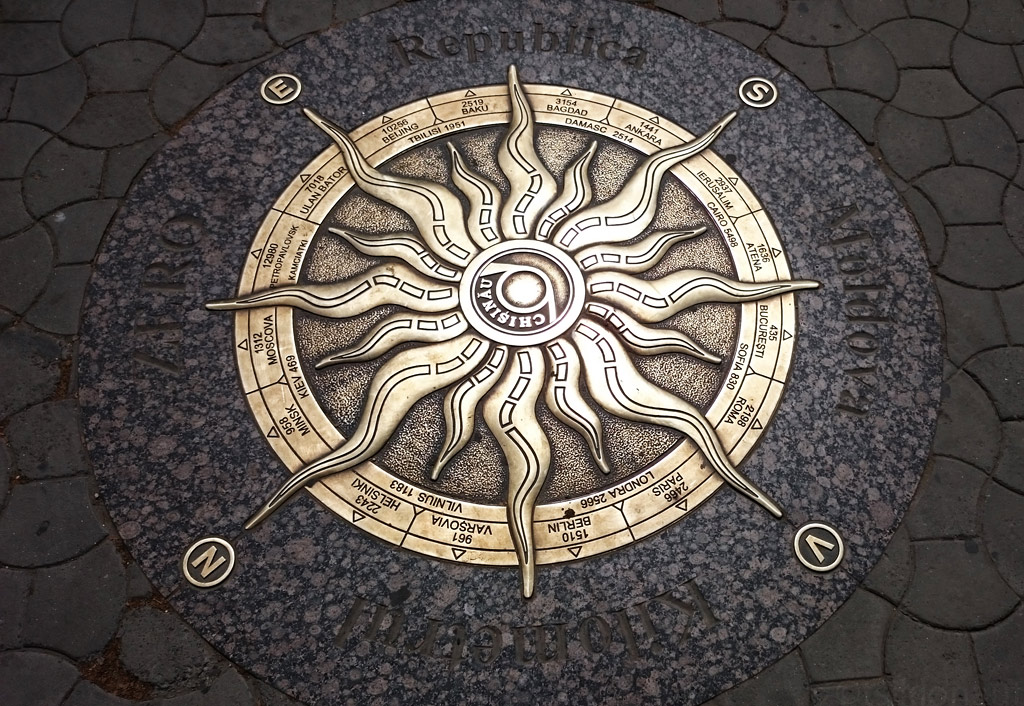
Distances from Chisinau, hope to reach some of those destinations...
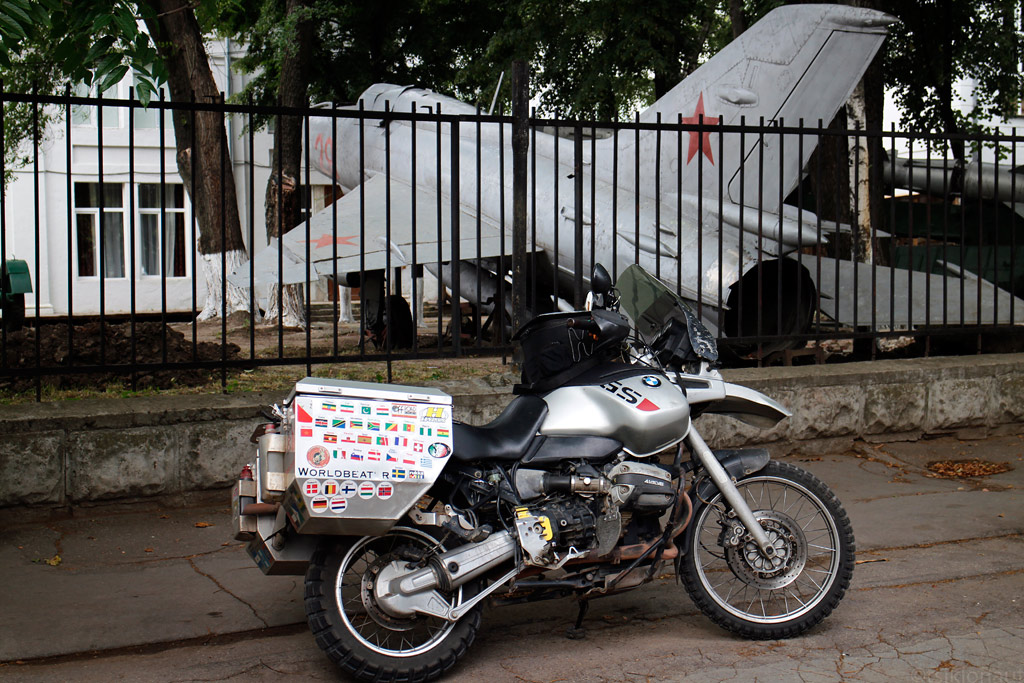
GS and MiG seem to be far relatives.
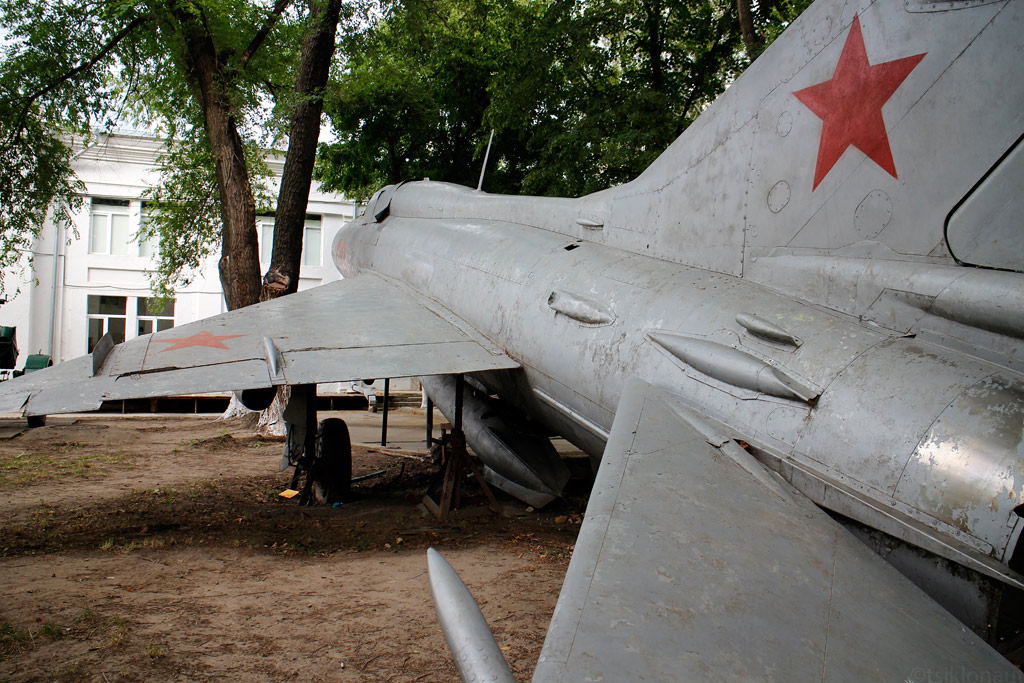
MiG-21 in one of the gardens, Chisinau.
Nearby we also visited a scenically located monastery of Orheiul Vechi sitting on top of a limestone cliff.
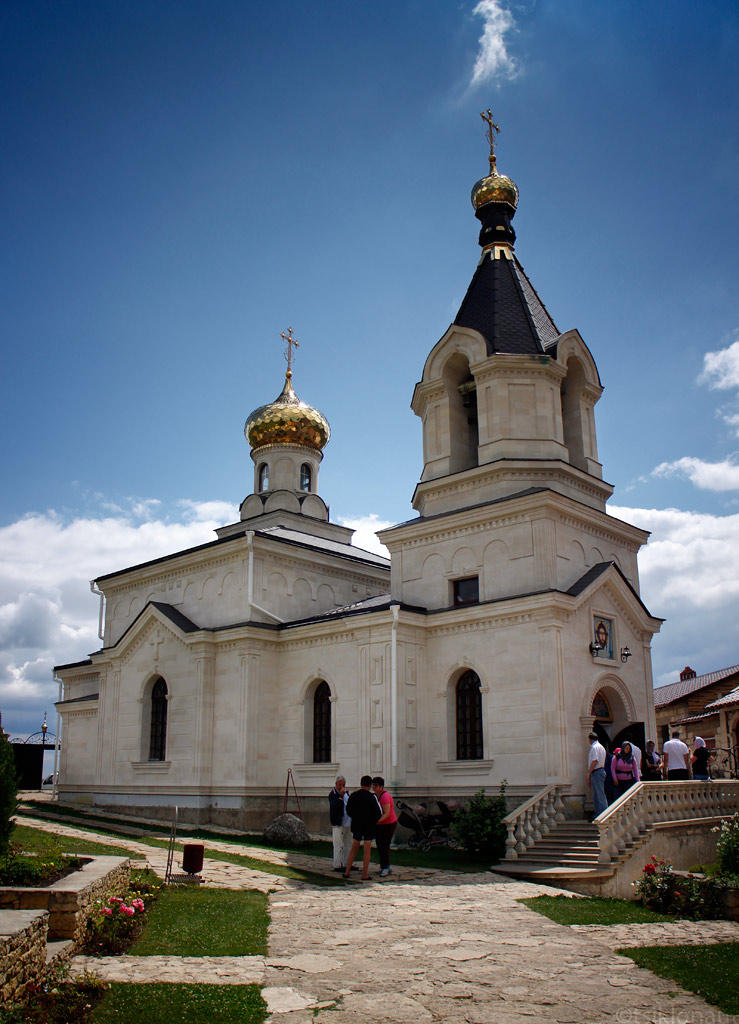
Old Orhei.

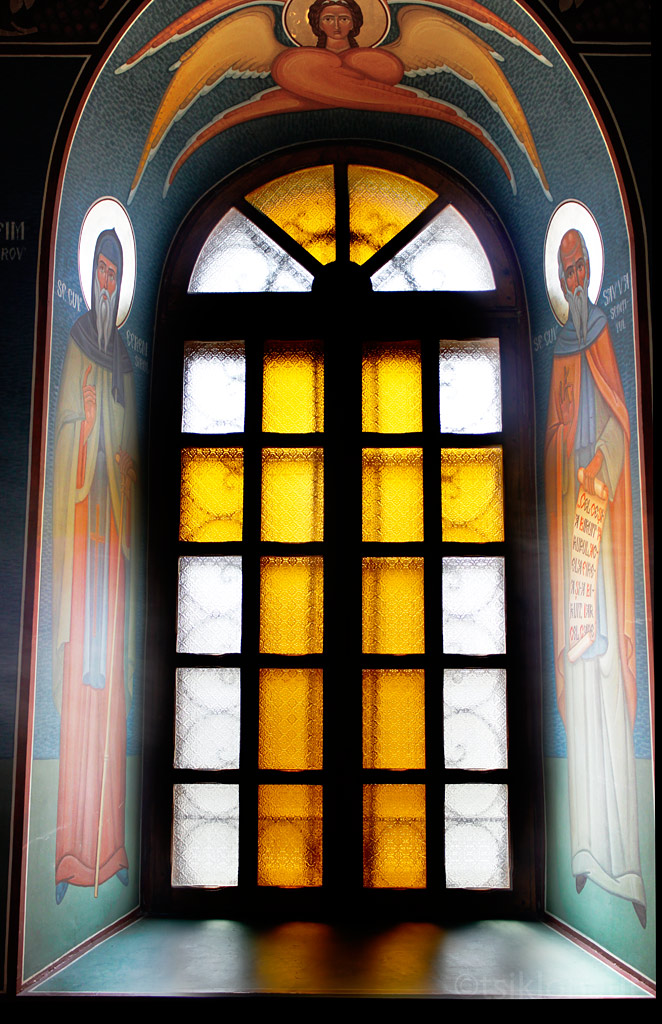
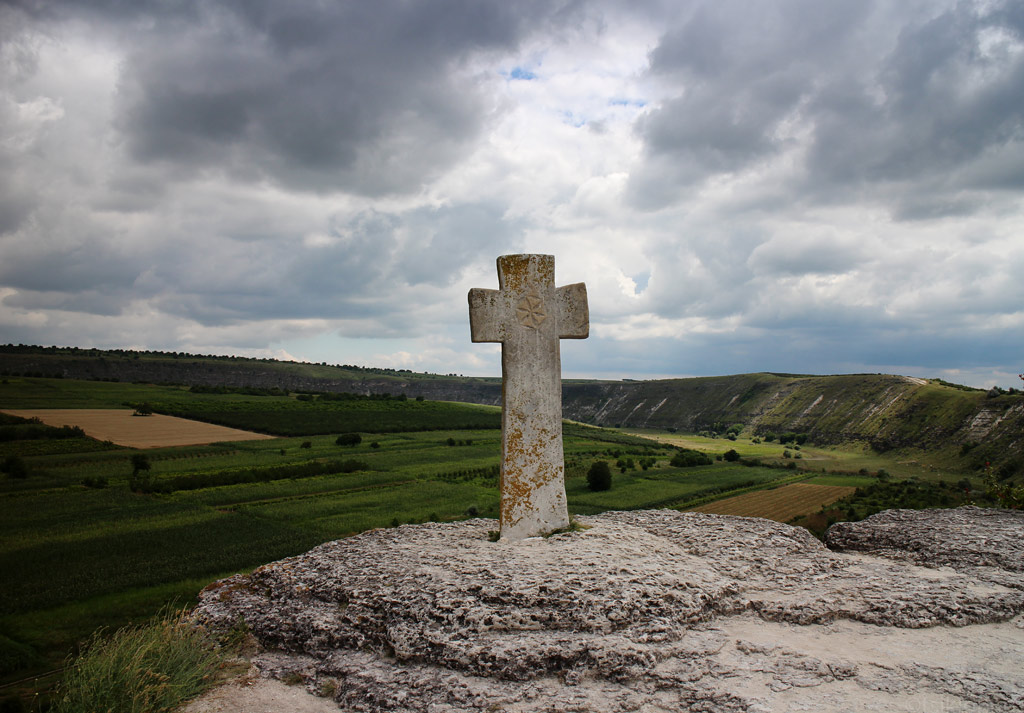
From Moldova we headed to Transnistria, a country that officially does not exist. Yet they have their own government, they own currency (that is impossible to exchange outside its territory), and of course, border crossings. Because Transnistria is officially located on Moldova’s territory, there is no border crossing on the Moldovan side, just a checkpoint where they checked us and ur bikes out of their system, but did not put any exit stamps in our passports, because officially, we were not leaving their territory.
We’d heard of horror stories about officials trying to extract exorbitant amounts of money from travellers entering Transnistria, and about corrupt traffic police, so we were prepared to turn around and go back to Moldova proper as soon as things start to get too complicated on the border. The “good luck!” from the Moldovan officers as we left their checkpoint really seemed heartfelt.
As we arrived at the Transnistria border post a few hundred meters away, we knew that the “republic” is taking itself seriously - the border post looked like a real border post, with all the necessary buildings and equipment, not some cowboy stuff. First thing they asked if we knew that we would have to declare our bikes and that there were costs involved. Here we go, we thought, and asked about the estimate. It seemed reasonable, so we decided to proceed. The immigration check was swift, although once again, we did not get any stamps, just immigration slips. Customs was a longer story, as Kariina had to fill in duplicates of customs declaration (in Russian), and the officer had to type the information in, so it took quite a while. For declaring the two bikes, and for mandatory insurance, we had to pay a total on 13 euros, which was all receipted and we even got change in Transnistria rubles. So much about the dreaded corruption at the border…
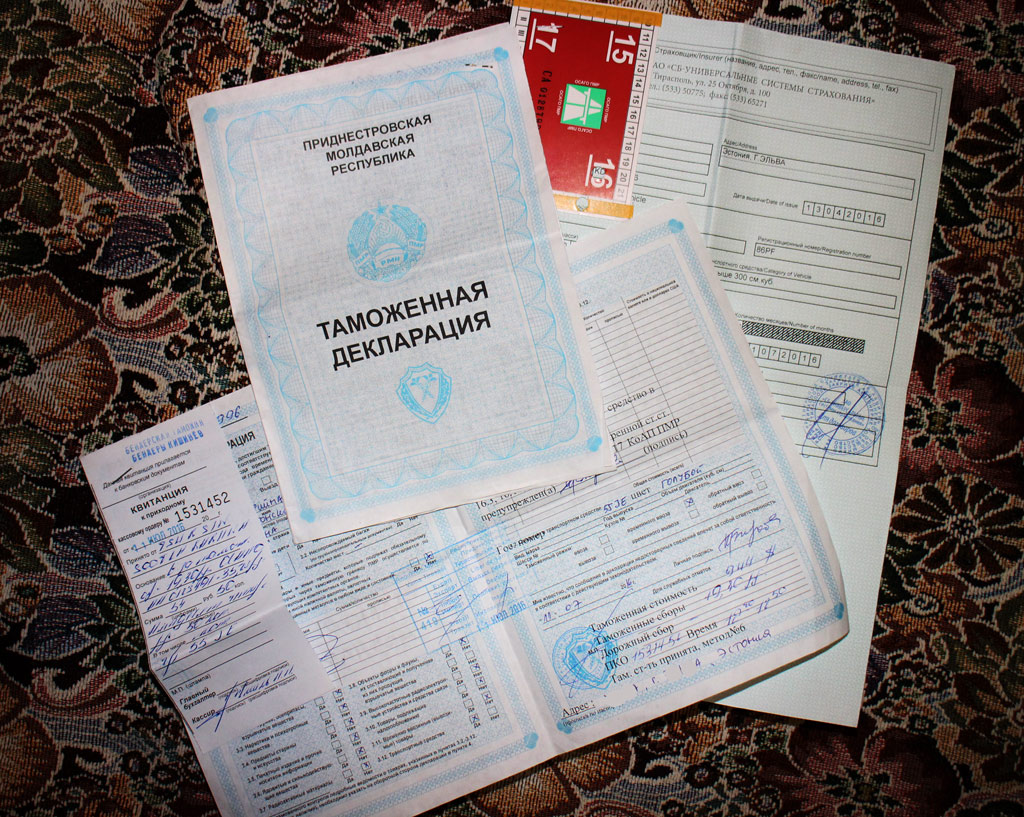
Transnistrian documents look like some sort of diplomas.
As we got in, we moved carefully though, looking around for those crooked cops. Our aim was to get to their capital city Tiraspol which wasn’t that far away from the border as the republic is quite small. As we could already deduct from the symbolism at the border, communism is a big thing in Transnistria, and so we were not surprised to see huge banners in the capital with slogans such as “In the name if unity with Russia”, and pictures of decorated old men in army uniforms.

Transnistrian flag - does it look strangely familiar?
It didn’t take long before at a rather confusingly signposted roundabout Kariina got stopped by police. You can already guess which thoughts ran through our minds… He asked for her driver’s license and bike’s registration and asked her to walk to a nearby booth. The young cop explained that she’d crossed a continuous line while riding on the roundabout, which might well have been the truth, as it really was a bit confusing. Apologetically, she explained that she always tries to abide by the rules, but the cop kept typing details from her documents into his computer. Eventually, he gave the papers back and said goodbye. What? No fine? We zoomed off carefully, wondering if he’d had mercy because she was a foreigner, a woman and obviously shocked by what she had done (or just by the prospect of having to endure negotiations with those corrupt policemen), or if her infringement was now in the “system” and we would not be allowed to exit the country without payment of the fine.
We entered the relatively deserted centre of the city and looked up the somewhat famous landmark of Tiraspol:
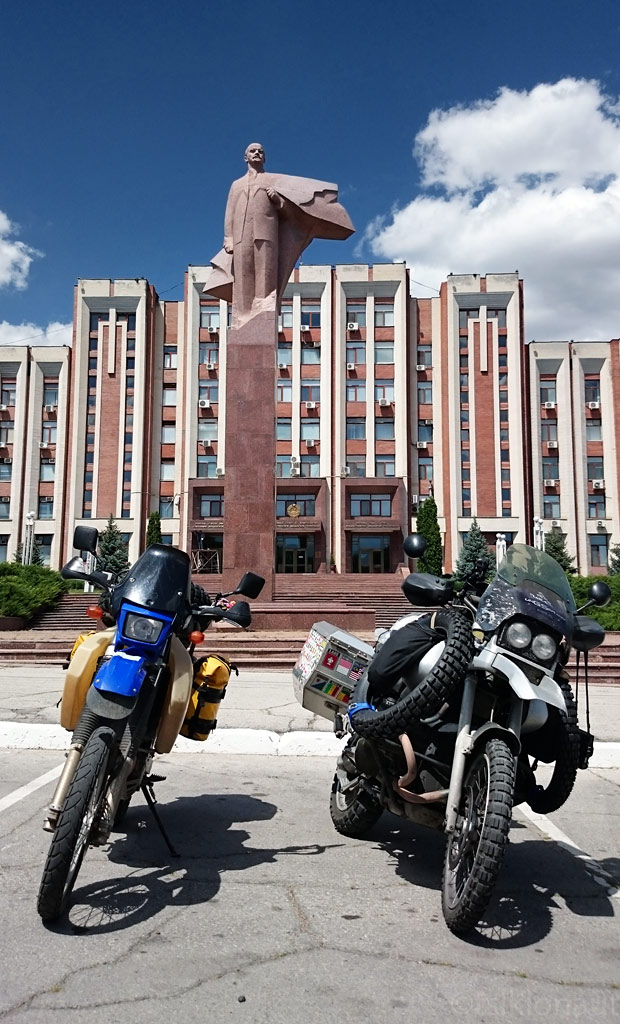
After taking the mandatory pictures, we started heading out of the centre, as we noticed an old Lada police car approaching us. We were ordered to stop by yet another police booth, where I had the following discussion:
- You crossed the continuous line!
- It is possible that I did, indeed.
- Don’t you know that motorcycles are not allowed in the centre?
It really seemed so absurd that we figured that we were into some serious fine extraction, finally.
- No, I didn’t see any signs.
- Maybe you came down some smaller road?
- Not sure, we are strangers in this city.
- I have to fine you for two infringements - first, for crossing the line, and second, for riding in the centre. If we settle it here, it will be 10 euros per bike, otherwise it is 50 euros.
- I would really like to see the sign before I pay anything.
The policeman looked up some driving school manual and showed the sign, but I insisted that I wanted to see where it is located. And so it went on and on, until he said that 20 euros for both of us would do. I said I only have 10, and he seemed to be satisfied. While I was flashing my wallet, he saw I have coins too, so as a “present” I had to give him a 1-euro coin in addition. I strongly doubt if any of this money ever made it to the state treasury, but at least he hadn’t invented the infractions - we did see the motorcycle prohibition sign somewhere down the road later on. So all in all, this was the first time we ever paid a traffic fine in our 250 000 kilometres of motorcycle travel.
Before exiting this state, we stopped at a gas station to spend the Transnistrian rubles we’d gotten as change to buy something to drink, and while we cooled down we chatted a little with the locals who said that life is now much better than it was when they were part of Moldova, and that Russia has invested a lot in the country. The only problem is, that they don’t get along with Moldova, and Ukraine is not quite on their side either, as it has its own major problems with Russia, so they are struggling to export anything which is a major obstacle for their economy.





